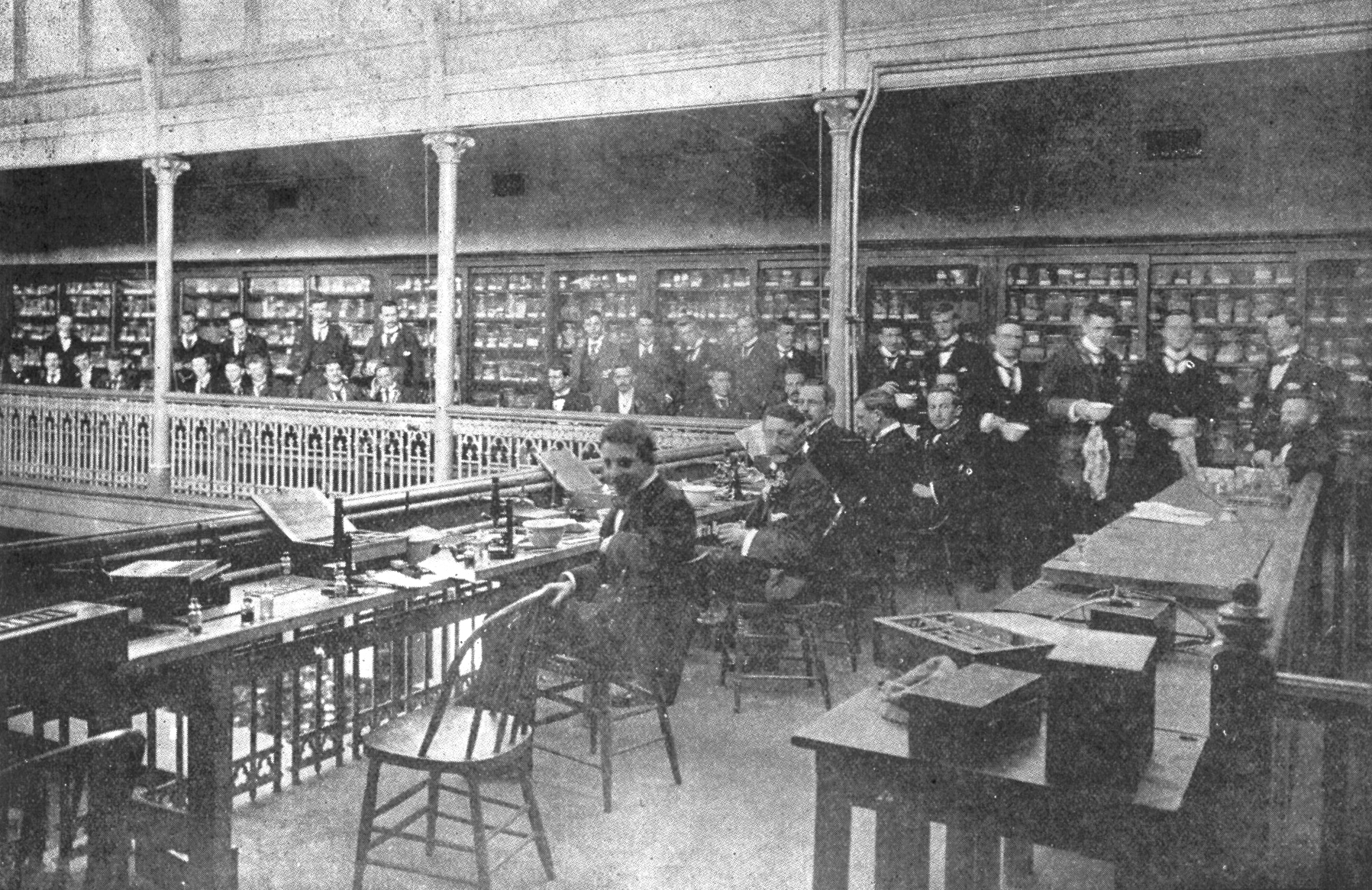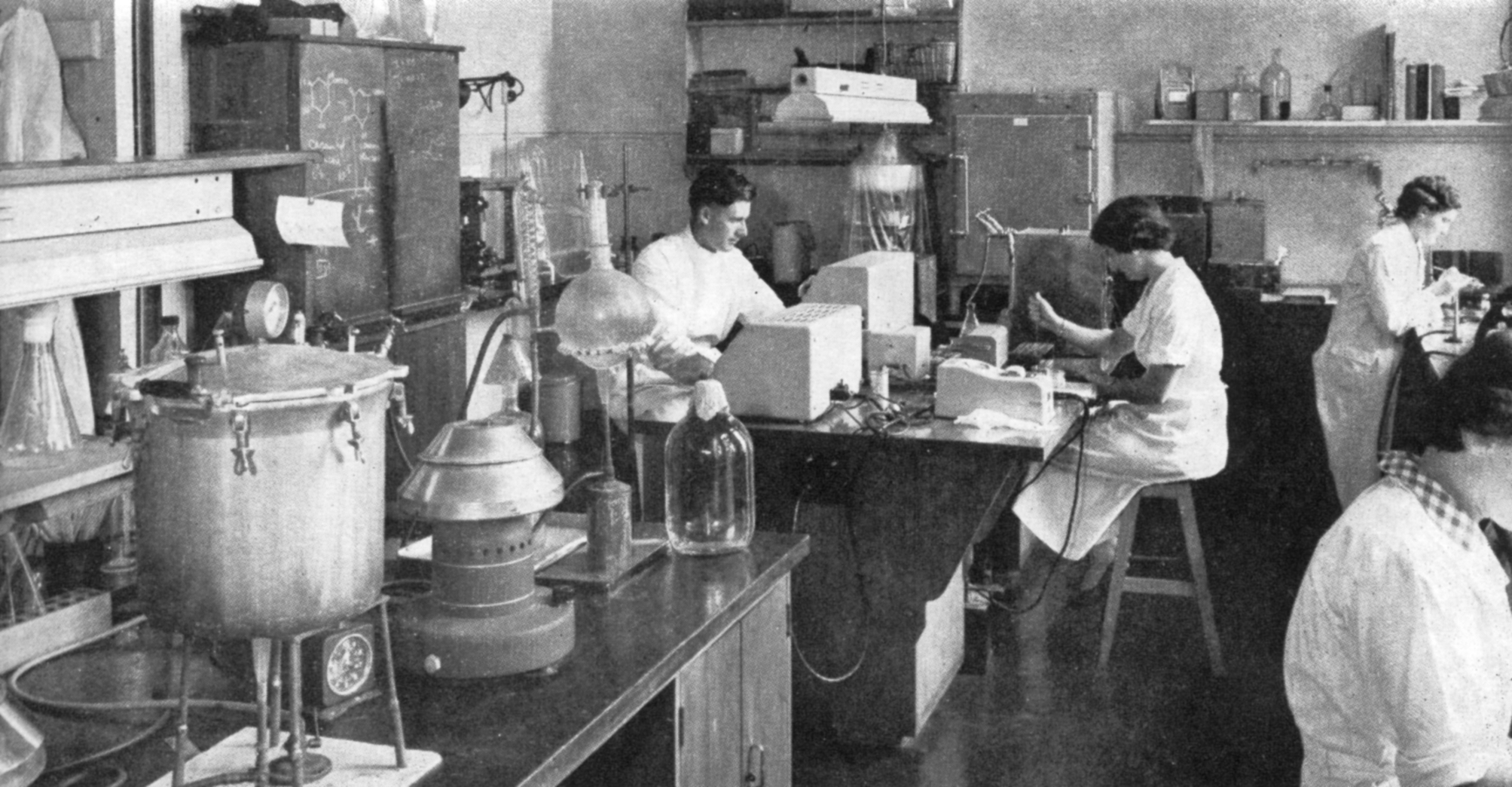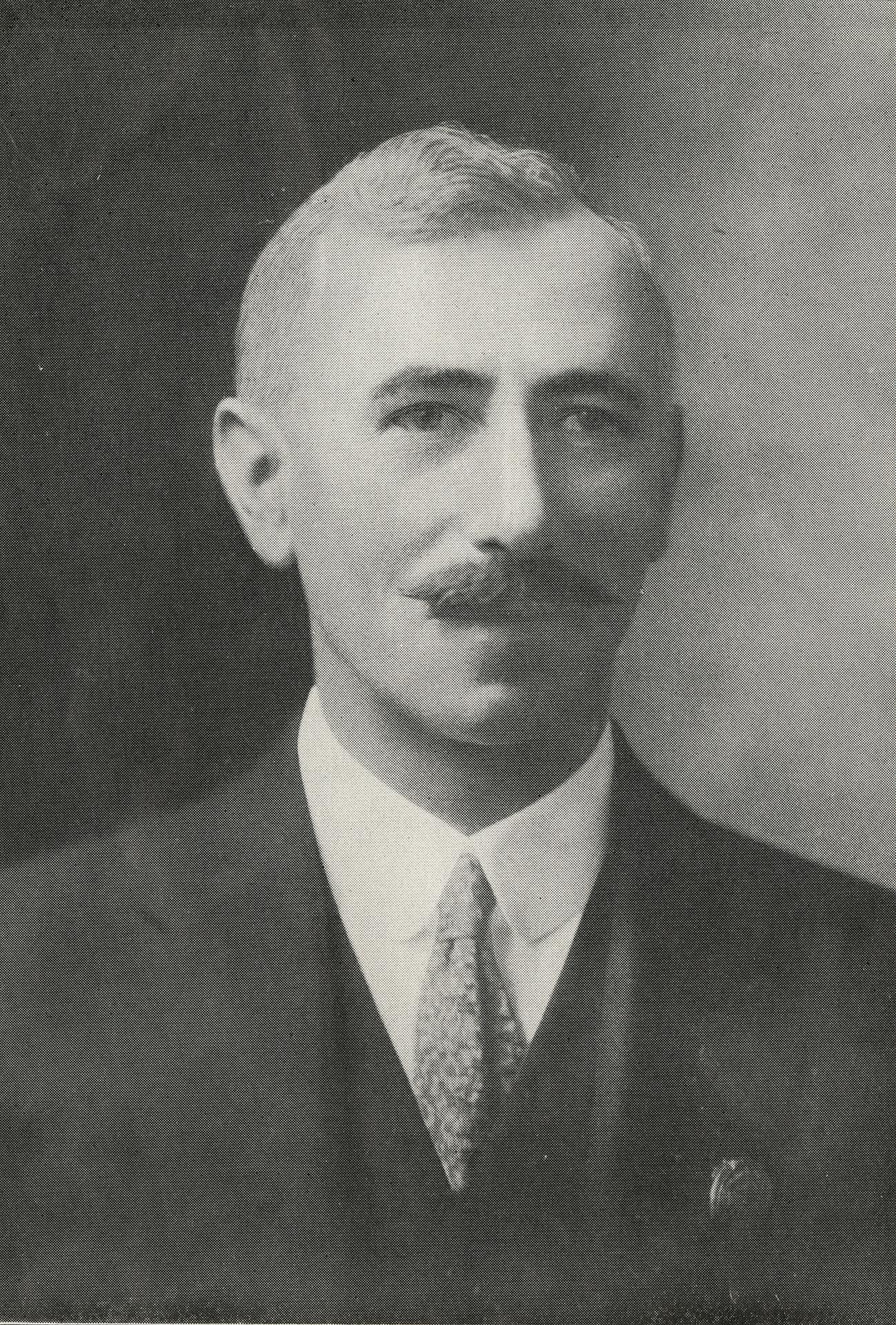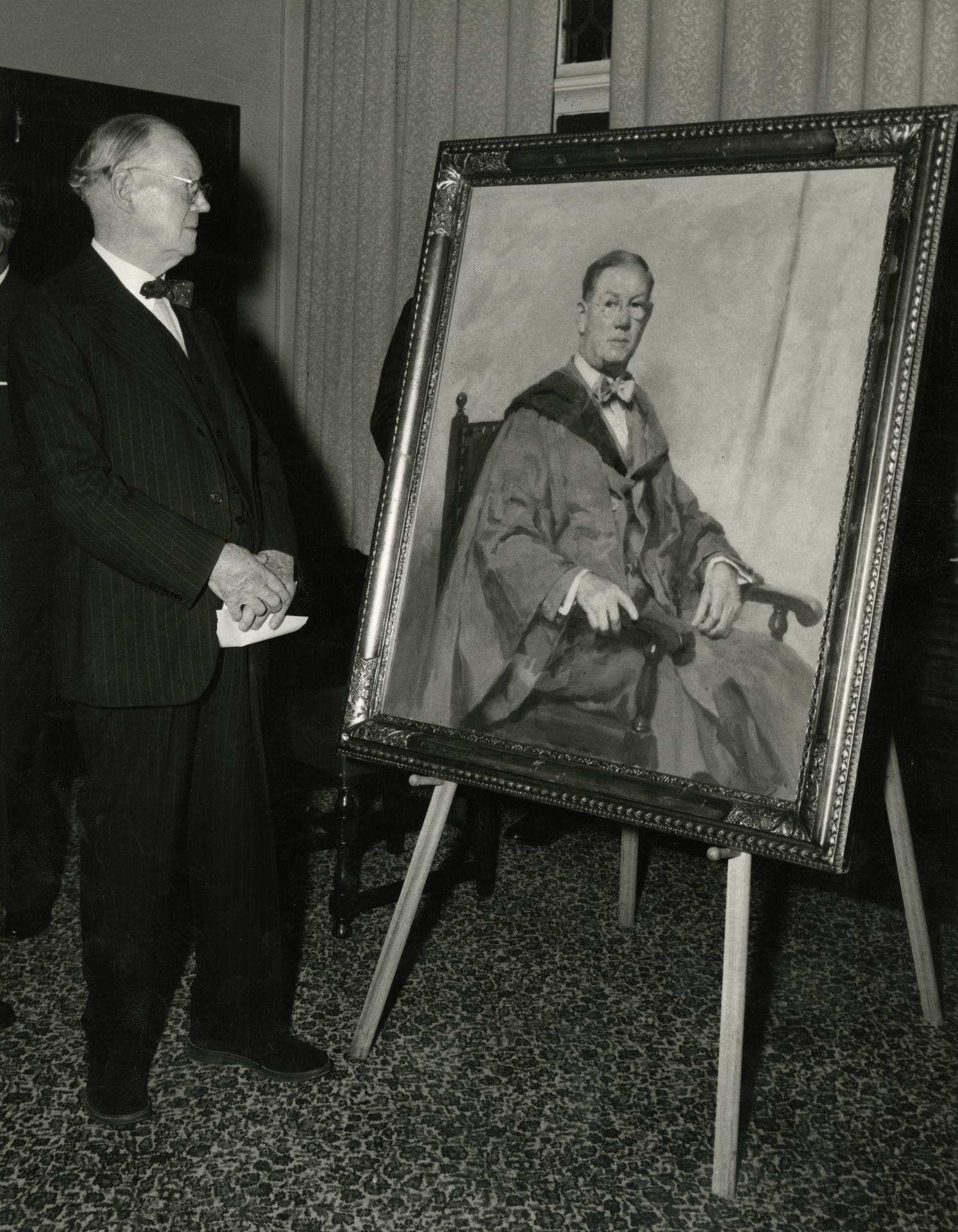Key 32: Bacteriological Laboratory (later incorporated in the Ian Potter Museum of Art) 1900; 1938; 1965
Following the pioneering work of Louis Pasteur and Robert Koch in Europe, Bacteriology developed rapidly as a new field of research and study. Thomas Cherry (1892- 1905, when he became State Director of Agriculture) began teaching it in Professor Allen's room in 1892 before a small laboratory space was found.

[Source: Alma Mater, supplement to Vol iii, No 6, September 1898, p. 27]
Over the next few years the Bacteriological Laboratory also provided a diagnostic service for the Victorian Central Board of Health. From 1897 a formal contract was signed with the Government, though it was not called the Public Health Laboratory until the 1920s. The Laboratory continued to provide teaching to medical students. In 1900 it moved to a new red brick building immediately behind Old Pathology and facing Swanston Street (eventually incorporated into the building housing the Ian Potter Museum of Art and Art Conservation Centre).

[Source: N. Olver and G. Blainey,The University of Melbourne, MUP, 1956, p. 91]

[Source: University of Melbourne Archives Image Catalogue, UMA-I-1126]
It was extended in 1938-39. In 1965 the Public Health laboratory moved into the new Microbiology building and was renamed the Microbiological Diagnostic Unit.

[Source: University of Melbourne Archives Image Catalogue, UMA-I-1338]